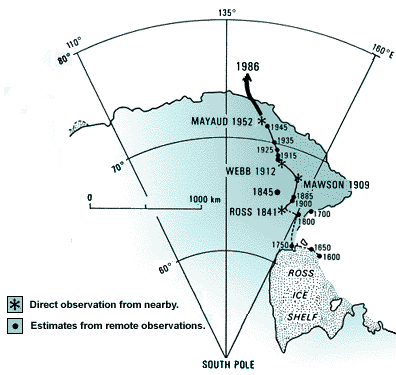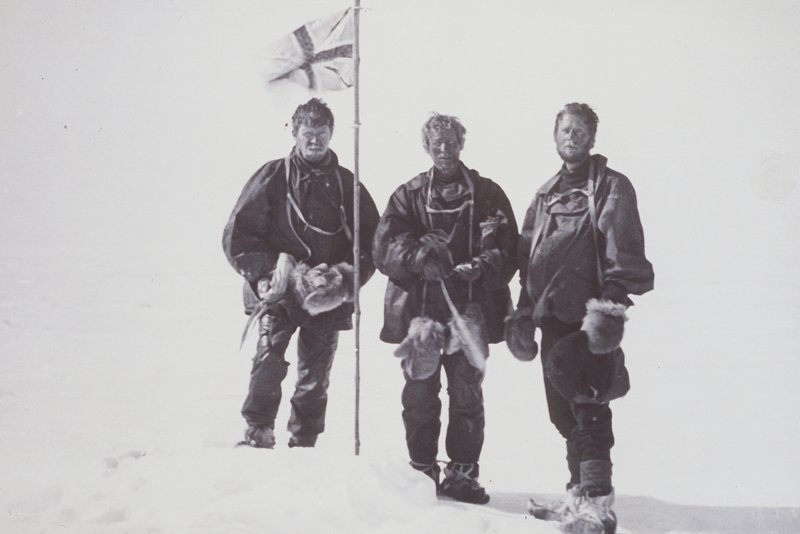South Magnetic Pole
The South Magnetic Pole is the wandering point on the Earth's Southern Hemisphere where the geomagnetic field lines are directed vertically upwards. It should not be confused with the "South Geomagnetic Pole" described later.
For historical reasons, the "end" of a freely hanging magnet that points (roughly) north is itself called the "north pole" of the magnet, and the other end, pointing south, is called the magnet's "south pole". Because opposite poles attract, the Earth's South Magnetic Pole is physically actually a magnetic north pole (see also North Magnetic Pole § Polarity).
The South Magnetic Pole is constantly shifting due to changes in the Earth's magnetic field. As of 2005 it was calculated to lie at 64°31′48″S 137°51′36″E, placing it off the coast of Antarctica, between Adélie Land and Wilkes Land. In 2015 it lay at 64.28°S 136.59°E (est). That point lies outside the Antarctic Circle. Due to polar drift, the pole is moving northwest by about 10 to 15 kilometers (6 to 9 mi) per year. Its current distance from the actual Geographic South Pole is approximately 2,860 km (1,780 mi). The nearest permanent science station is Dumont d'Urville Station. Wilkes Land contains a large gravitational mass concentration.
Expeditions
Early unsuccessful attempts to reach the magnetic south pole included those of French explorer Dumont d'Urville (1837–40), American Charles Wilkes (expedition of 1838–42) and Briton James Clark Ross (expedition of 1839 to 1843).
The first calculation of the magnetic inclination to locate the magnetic South Pole was made on January 23, 1838 by the hydrographer Clément Adrien Vincendon-Dumoulin (fr), a member of the Dumont d'Urville expedition in Antarctica and Oceania on the corvettes "L'Astrolabe" and "Zélée" in 1837-1840, which discovered Adelie Land.
On 16 January 1909 three men (Douglas Mawson, Edgeworth David, and Alistair Mackay) from Sir Ernest Shackleton's Nimrod Expedition claimed to have found the South Magnetic Pole, which was at that time located on land. However, there is now some doubt as to whether their location was correct. The approximate position of the pole on 16 January 1909 was 72.25°S 155.15°E.
South Geomagnetic Pole
The Earth's geomagnetic field can be approximated by a tilted dipole (like a bar magnet) placed at the center of the Earth. The South Geomagnetic Pole is the point where the axis of this best-fitting tilted dipole intersects the Earth's surface in the southern hemisphere.
As of 2005 it was calculated to be located at 79.74°S 108.22°E, near the Vostok Station. Because the field is not an exact dipole, the South Geomagnetic Pole does not coincide with the South Magnetic Pole. Furthermore, the South Geomagnetic Pole is wandering for the same reason its northern magnetic counterpart wanders.

